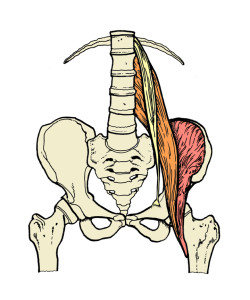The Psoas is the body’s main hip flexor which is why it is the main muscle of walking but it plays a deeper maybe more important role as a flexor.
Flexors are muscles that bring one body part closer to another one. Flexion’s relationship to the nervous system is through our fear response.
Our sympathetic nervous system, the system of excitation, from which stems our flight or fight response, manifests through flexion; like all animals in the wild when startled or afraid we automatically react.
The psoas is involved in each of these reactions.
Life is traumatic and this is not necessarily a bad thing.
From the big trauma of being born and taking our first breath to the lesser traumas of day-to-day life we are here to be traumatized and to one degree or another develop an inner support system to heal.
Like the pulsing of the heart and the ebb and flow of the tides, the body’s trauma/healing interplay is as natural as breathing.
When the nervous system doesn’t successfully integrate a traumatic event it becomes trapped in the body, very often manifesting through pain and injury to the psoas.
When the processing of trauma doesn’t proceed successfully we can get stuck in the sympathetic nervous system.
This affects many functions of the body, specifically the psoas and also our breathing.
The psoas is intimately connected to our diaphragm, the main muscle of breathing.
Both the psoas and the breath can lose the ability to work in an optimal way and as a result many of our essential functions can become disrupted. The synergistic relationship of the diaphragm and the psoas provide tone and stimulation to many of our organs and when they are not working in harmony the opportunity for dysfunction is increased exponentially.
Physical troubles are the obvious result of problems with the psoas but being stuck in the sympathetic nervous system can cause wide ranging and more troubling emotional effects as well.

